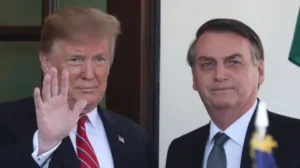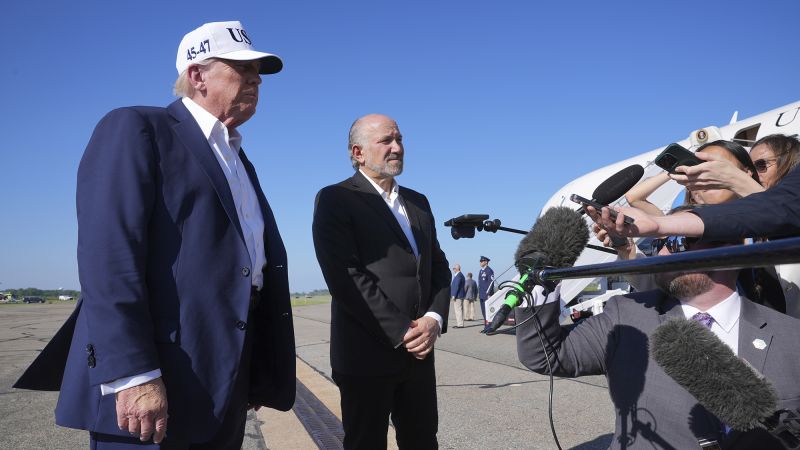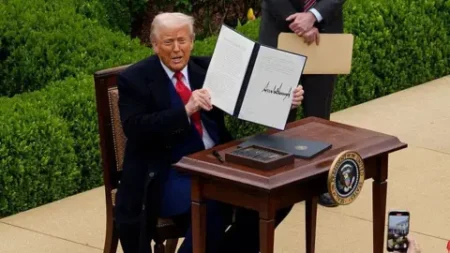In a move that signifies a growing tension in international trade relations, President Donald Trump has intensified the pressure on two of America’s significant trading partners – Japan and South Korea. On a momentous Monday, Trump dispatched letters to the heads of state of both countries, outlining a new tariff policy that would impose a substantial 25% tariff on goods imported from these nations, effective August 1. This decision is likely an effort to reshape trade negotiations and shift the balance in favor of American economic interests.
The correspondence from Trump, shared via his social media platform Truth Social, highlighted not only the impending tariff increase but also provided insight into the rationale behind such a measure. Both Japan and South Korea have been informed that they run significant trade deficits with the United States. In his communication, Trump underscored his concerns about the imbalance, where American consumers and businesses purchase more in goods than they export to those countries. Moreover, the president specified that this trade disparity has driven him to take decisive action, suggesting that various policies were hindering the competitiveness of American goods in the international market.
In this almost mirror-image announcement to the leaders of Japan and South Korea, Trump mentioned that the intended tariff rate of 25% is merely a starting point and could be viewed as “far less than what is needed” to rectify the existing trade deficit. This framing underscores an underlying negotiation tactic, proposing the tariffs as leverage to stimulate discussions that could lead to better trade terms for the United States. Additionally, Trump encouraged both nations to invest in manufacturing within the U.S. to avoid the impending tariffs. He offered assurances that there would be “no tariff” should either nation choose to establish their manufacturing processes in the United States, promising expedited approval processes for such investments.
However, Trump’s stance was not merely one of encouragement; he also issued a stern warning regarding potential retaliatory measures from Japan and South Korea. He indicated that should either country respond with their tariffs, those rates would be added to the already implemented 25%, thereby increasing the financial burden on American consumers and businesses. This warning highlights the delicate balance of negotiation strategies and the potential for escalating trade disputes that could arise from such actions.
As Trump prepared to enhance his trade approach, he signaled his intent to send additional letters to other world leaders, emphasizing the impending deadline of July 9 at 12:01 a.m. ET. This deadline marks the end of a temporary pause on what he refers to as “reciprocal” tariffs, which had initially been introduced in April. The memorandum regarding tariffs stipulated that Japan would be subject to a 24% tariff while South Korea faces a 25% tariff. Notably, Trump clarified that these new rates would be separate from existing sector-specific tariffs, which currently apply to certain categories of goods such as automobiles. This distinction mitigates the risk of layered tariffs—where tariffs on specific sectors would compound—assuring that businesses would not face excessively high costs.
Trump concluded his letters with a reminder of the dynamic nature of tariffs, suggesting that rates could be modified based on the U.S. relationship with Japan and South Korea. This flexible approach intends to convey goodwill and the promise of a beneficial partnership, stating, “You will never be disappointed with The United States of America.”
The announcement has had immediate repercussions on the financial markets. Following the revelation of the tariff increase, U.S. stock markets experienced a notable decline. The Dow Jones Industrial Average fell by as much as 530 points—a drop of 1.2%—while other indexes, including the S&P 500 and the Nasdaq, also posted losses.
This development unfolds a significant saga in global trade practices, suggesting that the upcoming weeks will be pivotal in shaping the nature of U.S. trade relations and potentially altering the dynamics of international commerce in the long term. As the situation evolves, the prospect of further developments continues to remain on the horizon.











